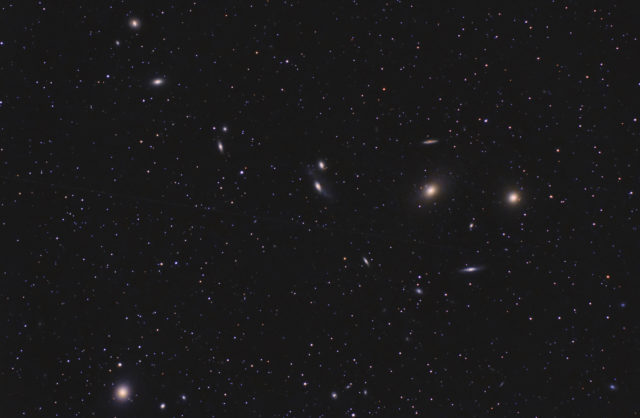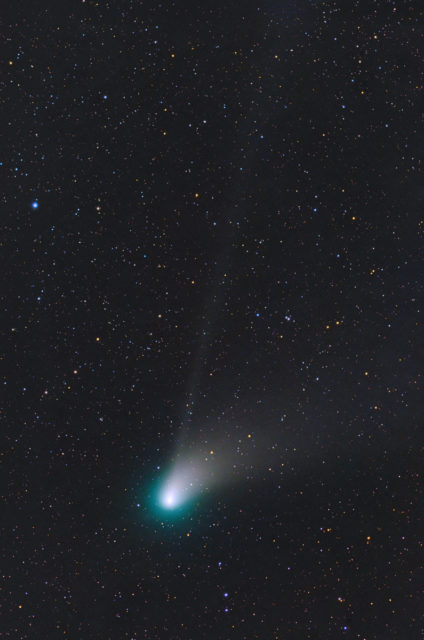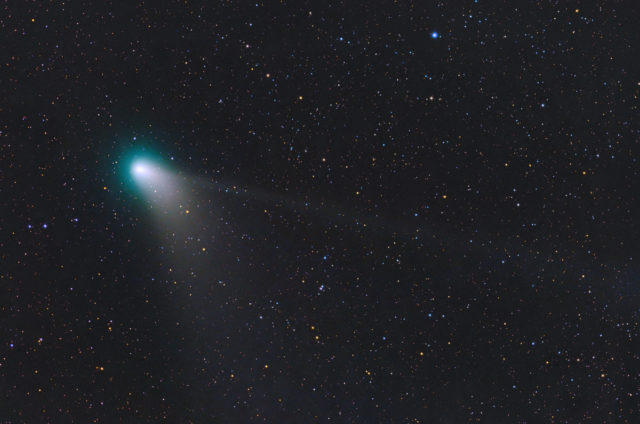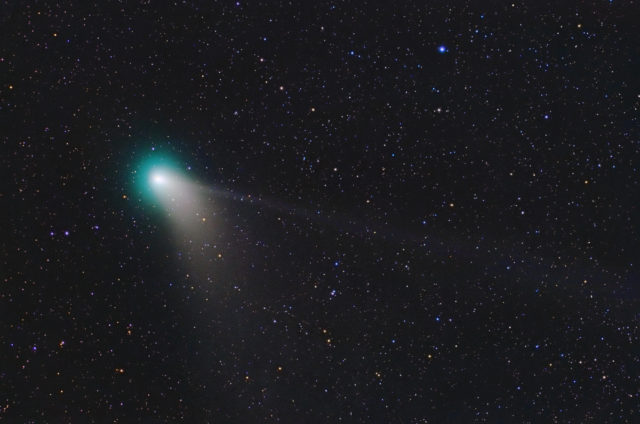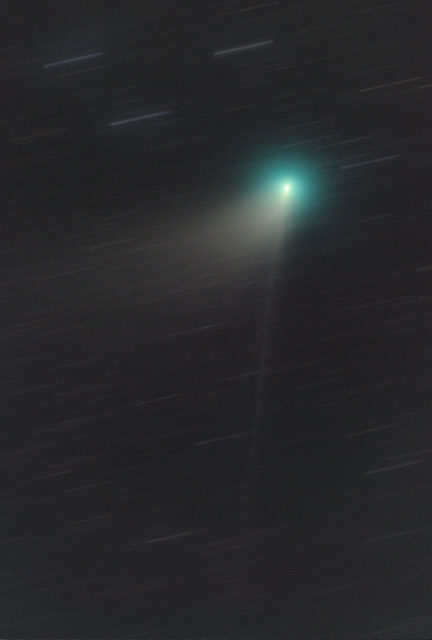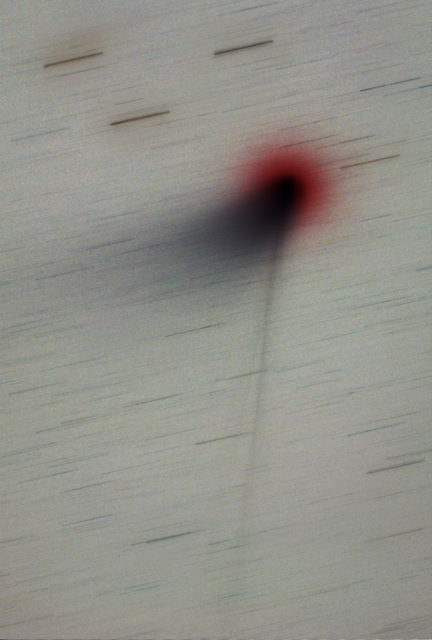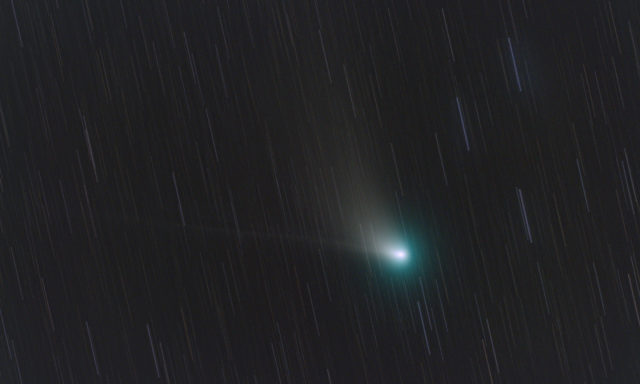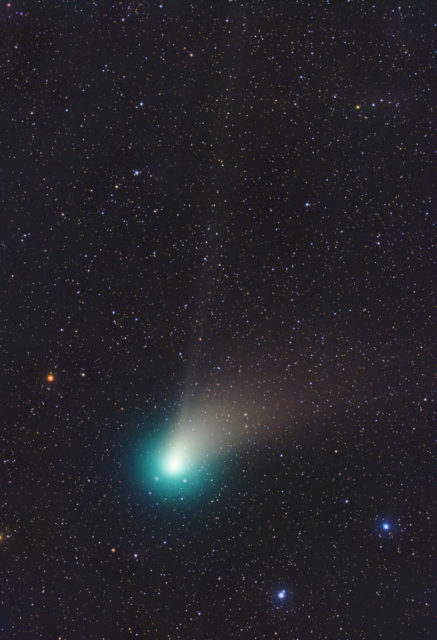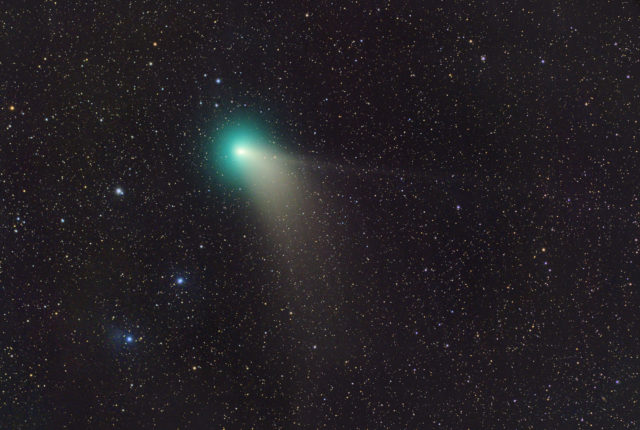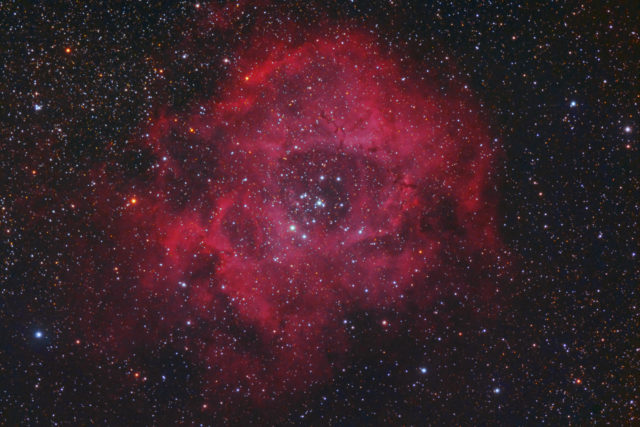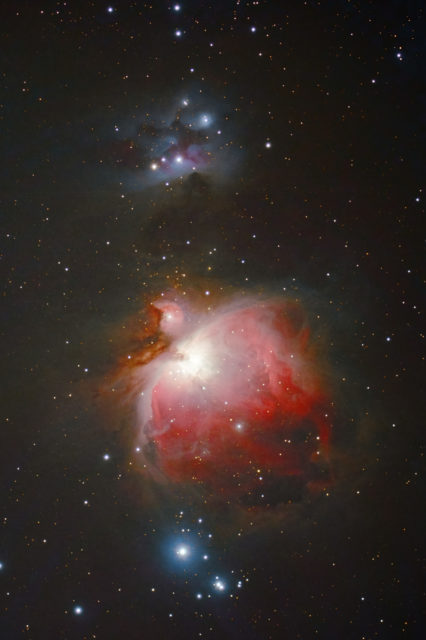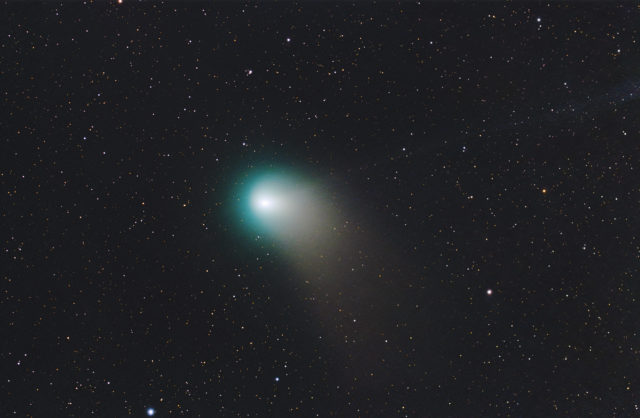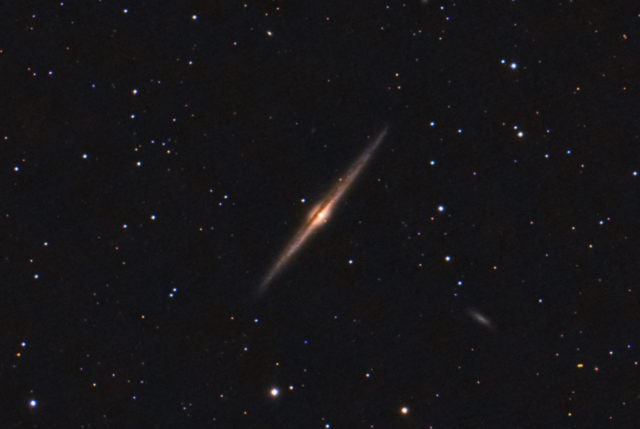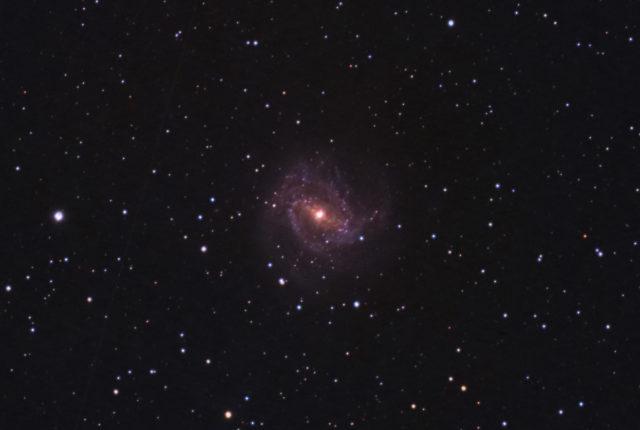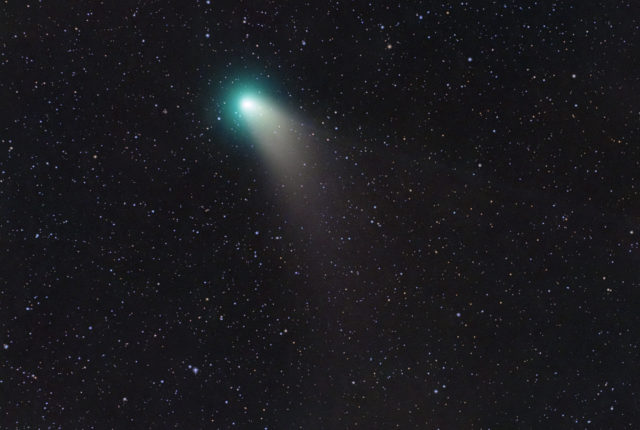
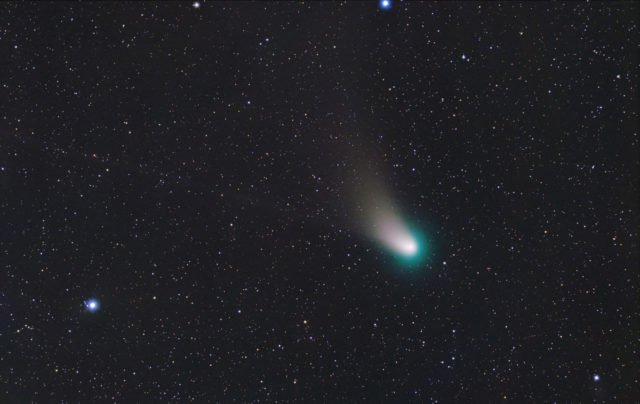

Another comet image to add to my collection. This is perhaps the last image from me of C/2022 E3 ZTF for perhaps the next 2 weeks. Weather forecast is nothing but clouds next 10 days or more. By that time, the moon will getting full and the comet is rapidly shrinking in size and fading in brightness. It will still be around, just not as photogenic as it is now.
Also on this night, I tried out a new filter – the Antlia Triband RGB Ultra Filter. Boy, that’s a weird one, let me tell you. Blue as blue can get. lol. But, a stack from SharpCap color balances out in IRIS when setting the blackpoint, so I don’t know? SharpCap refuses to color balance it and leaves it too blue, however. lol So, I just stack and then process first in IRIS for initial color.
This object(s) below was the second or third test subject. Perfect, since this is in strong LP on the north to northwest side. If it can block that, great! And it seems to have blocked it:
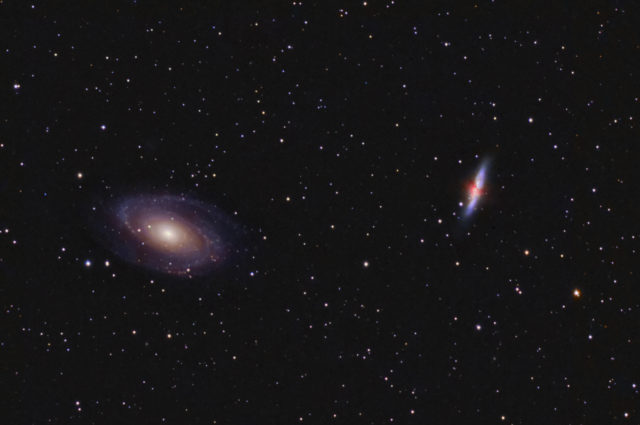
Yes, it has funky colors, but they’re mostly there, instead of that dull pasty look from duo-band filters. I don’t know? I’ll have to do more testing.
Thor’s Helmet was the first object I used it on. I shot it with a UV/IR then with the Antlia Triband with roughly the same framing. This is just the subs-images using the Antlia. It is about 33 minutes of combined exposure:
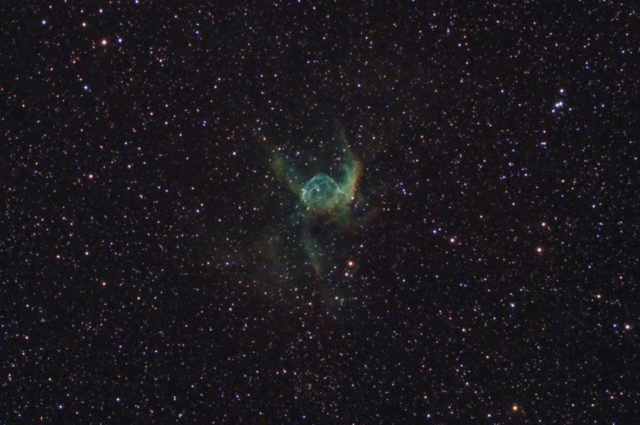
Finally, after experimenting with Thor’s Helmet, I went to one of the tougher targets – the Virgo Cluster. Its always either not enough exposure or the wrong colors with duo-band and UHC filters for this cluster. But, does this filter have the blue and enough other colors to give it what it needs? Well, here it is:
